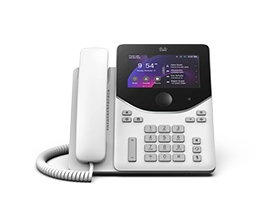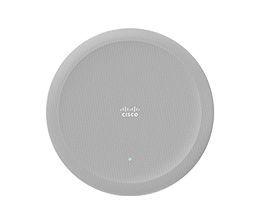The ultimate guide to automatic Call Distribution (ACD) for call centers.
If you've ever worked in a contact center, you know how chaotic it can get when call volumes peak. It's tough figuring out which calls to take first, what to do when all agents are busy, and how to keep wait times from blowing up.
A good, go-to solution is using an Automatic Call Distribution (ACD) system. Let's look into what ACD is, how it helps streamline customer engagement, and the benefits it brings to your business.
How does ACD work?
ACD—as we noted stands for Automatic Call Distribution—is a system used in contact centers to efficiently handle incoming calls and assign them to the most suitable agent. In essence, this system manages high call volumes in the best way possible, preventing overload on the team and ensuring that customers are promptly connected to agents.
Before an inbound call reaches an agent, it passes through an IVR (Interactive Voice Response) system. While IVR and ACD are often confused, they serve distinct functions. IVR interacts with callers through a voice menu that identifies their needs. For instance, an IVR might prompt the caller to “Press 1 if you want to purchase a product.” Based on the caller's response, the ACD system then routes the inbound call to an appropriate sales agent—functioning to avoid misdirection to unrelated departments.
Notably, an automatic call distribution system is typically associated with on-premise contact centers. However, cloud contact center solutions offer the same ACD capabilities with added benefits: greater scalability, reduced upfront costs, enhanced flexibility, and seamless integration with other cloud-based tools and services, among other key contact center functions.
ACD process
The automated call distribution process can be thought of in the context of the following three steps.
Step 1: Caller Identification
The process begins with determining the customer’s reason for calling through an IVR system. Caller ID systems further enhance this by identifying factors such as language and location. This information helps the ACD route the call to the most suitable agent.
Step 2: Call Queueing
The ACD places callers in a queue and organizes them based on:
- Nature of the query.
- Caller status.
- Agent availability.
- Wait time.
VIP callers often receive priority, but the system can also prioritize based on other factors—generally tailored to specific individual customer center policies.
Step 3: Call Routing
The ACD routes calls according to the selected distribution method. If minimizing wait times is the goal, the ACD sends calls to the next available agent. If the focus is on quality of service, it routes calls to agents based on their skills.
Cloud contact centers can take this three-step process to greater levels via advanced AI-driven routing, seamless omnichannel integration, comprehensive analytics, and other cloud-based features.
More specifically, cloud-based contact centers offer:
- Real-time scalability: Cloud-based ACD systems can effortlessly adjust to varying call volumes, ensuring consistent performance during peak times without the need for significant infrastructure investments.
- Advanced AI-driven routing: Leveraging artificial intelligence, these systems can analyze caller data and interaction history to route calls to the most suitable agents—increasing the likelihood of first-call resolution.
- Enhanced flexibility and accessibility: Agents can access the ACD system from anywhere with an internet connection, facilitating remote work and ensuring that your contact center remains operational regardless of location constraints.
- Automatic updates and maintenance: Cloud providers handle system updates and maintenance, making sure that your ACD technology remains up-to-date with the latest features and security protocols without disrupting your operations.
6 ACD Methods
ACD systems use various methods to effectively distribute incoming calls among agents. These methods aim to optimize call handling efficiency and balance workloads to improve customer service.
1. Simultaneous
Simultaneous call distribution routes incoming calls to all available agents simultaneously. As soon as a call comes in, every agent's phone rings at the same time. The first agent to pick up connects to the caller, and the phones of the other agents stop ringing.
2. Uniform
Uniform automated call distribution software distributes calls evenly among agents over time by assigning calls based on each agent's availability. The system monitors how long each agent has been idle and directs incoming calls to the agent who has been waiting for the longest. Once an agent handles a call, they rejoin the pool, and the system assigns the next call to the agent who has then become the most idle.
3. Fixed order
Fixed order automatic call distribution software sends incoming calls to agents in a predetermined sequence. The system maintains an ordered list of agents and directs each new call to the first agent in the list. If the first agent is unavailable (e.g., on another call or logged out), the call passes to the next agent in the sequence. This process continues down the list until an available agent answers the call.
4. Weighted
Weighted call distribution assigns incoming calls to agents based on predefined weightings. Each agent has a specific percentage or number of calls relative to the total call volume. When a call arrives, the system routes it to an agent according to their assigned weight, ensuring that agents receive calls in proportion to their designated weights. This method allows for prioritizing certain agents—such as those with specialized skills or higher performance metrics—by allocating a greater share of calls to them.
5. Round-robin
Round-robin call distribution assigns incoming calls to agents in a sequential and cyclic order. The system maintains a list of agents and routes each new call to the next agent in the list, looping back to the first agent after the last one has received a call. This ensures an even distribution of calls for all available agents, preventing any single agent from being overburdened while others remain underutilized.
6. Talk time-based
Talk time-based automatic call distribution software routes incoming calls based on the cumulative talk time of each agent. The system monitors the total duration each agent has spent on calls and directs new calls to the agent with the least total talk time. By balancing the talk time across agents, this method aims to ensure that no single agent is overextended while others have lighter workloads. This helps in maintaining an equitable distribution of call handling time among the agent team.
The Benefits of ACD
Automatic call distributor software enhances contact center operations in various ways, including:
Improving the customer experience: By intelligently routing calls based on agent skills, availability, and other criteria, ACD systems ensure that customers are quickly connected to the most suitable agent to handle their specific needs. The result: reduced wait times and improved chances of first-call resolution, directly enhancing the customer experience. Moreover, the integration of ACD with IVR systems allows for pre-call information gathering, which prepares agents with the context needed to provide effective and personalized service.
Enhancing reporting and analytics: ACD systems are equipped with comprehensive data collection capabilities that track every aspect of a call—from wait time to resolution. This data feeds into advanced analytics reports that managers can use to monitor key performance indicators like call volume, call resolution times, agent activity, and customer satisfaction levels. These insights enable ongoing improvements to call center operations and agent training programs, ensuring that the center operates efficiently and continues to enhance customer service quality.
Providing omnichannel integration: Cloud-based ACD systems facilitate the integration of multiple communication channels, such as voice calls, emails, chats, and social media interactions. Such unified communication ensures that a single system manages all customer interactions, regardless of the channel. It allows agents to view complete customer interaction histories and enables more informed responses and consistent service across all media.
Informing agent coaching: ACD systems collect detailed data on each customer interaction, including metrics on response times, resolution rates, and customer feedback. Managers can use this data to identify specific areas where agents excel or need improvement, making for more targeted training and development initiatives.
Improving resource allocation: ACD systems automatically distribute incoming calls based on predefined criteria, such as agent skills, availability, or call type. This helps to ensure the most suitable agents handle each call with no manual intervention, and human resource optimization arises as a byproduct. More specifically, methodical allocation reduces idle times and avoids overburdening any single agent.
Offering scalability and flexibility: ACD systems, especially those based in the cloud, allow contact centers to scale up or down based on current call volume. This scalability ensures that the center can handle peak volumes without additional permanent resources and scale back during quieter periods. Flexibility is also available through easy integration with other technologies, allowing contact centers to adapt to new communication channels or business needs without significant system changes.
Lowering costs: By automating the call distribution process, ACD systems reduce the need for excessive administrative oversight and manual routing decisions. This reduction in labor-intensive processes decreases operational costs. Additionally, the efficient handling of calls typically reduces the average call handling time, which can decrease overall operational costs by minimizing the duration of calls and potentially reducing the number of agents needed at any one time.
Streamline your call center operations with Webex Contact Center.
With Webex Contact Center, you not only gain the full advantages of cloud-based ACD systems, but also access to a suite of next-generation contact center solutions.
Webex Contact Center provides centralized control over all incoming and outgoing interactions, independent of organizational structure, technology, or location. It accurately identifies the availability of agents, teams, sites, and partners, directing each interaction to the agent best suited for the specific issue based on their skills.
Plus, with its next-generation AI capabilities and its operational efficiency- and agent productivity-driving tools, Webex Contact Center is the all-in-one solution to improve contact center operations.










